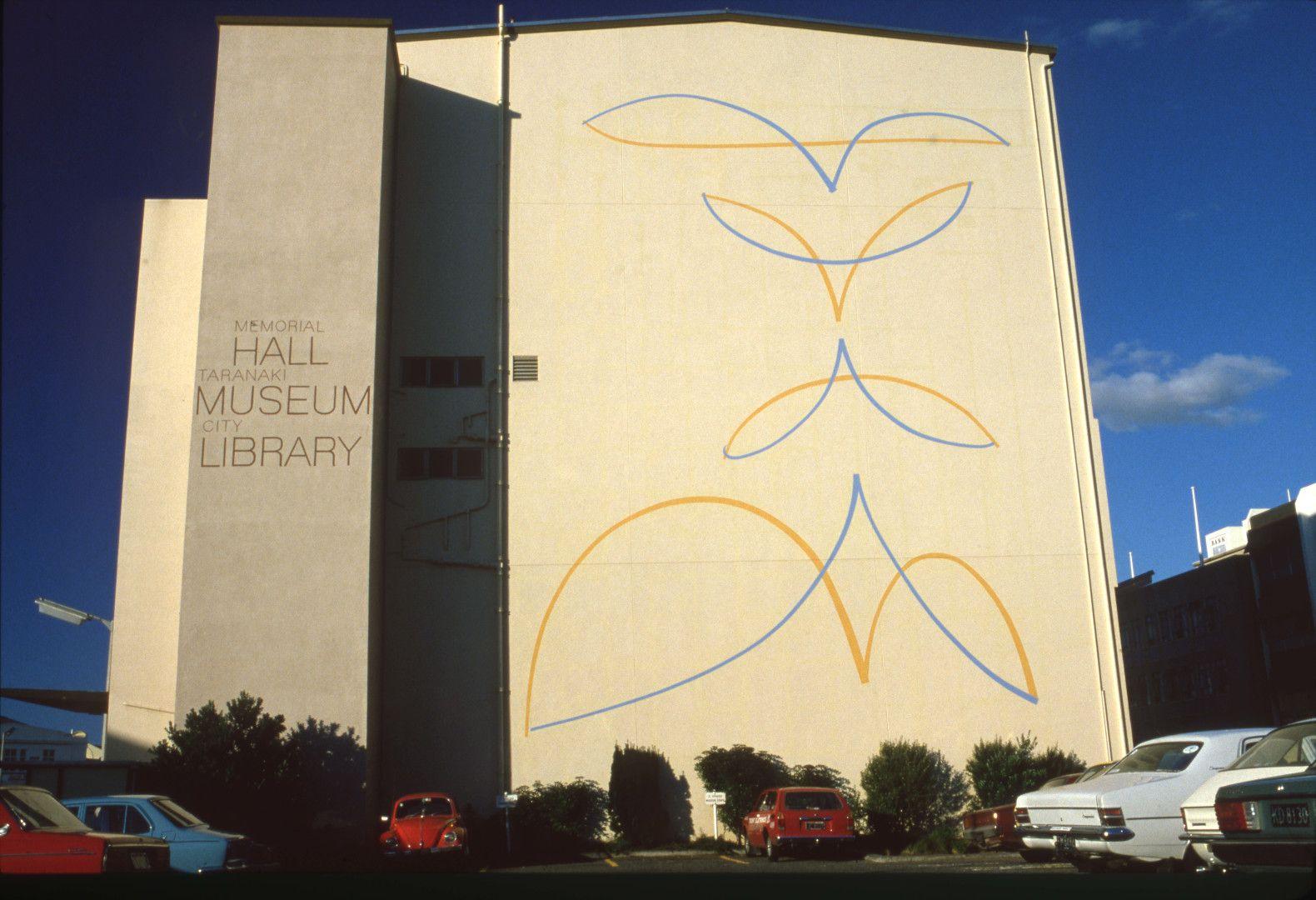
Michael Smither, 'Harmonic Mural' (1979), New Plymouth War Memorial Hall & City Library, CBD, Ngāmotu New Plymouth
Image: courtesy Govett-Brewster Art Gallery

- DETAILS
- MAP
Description
From an article in the Daily News, 28 May 1992:
Smither upset mural covered with paint
A prominent New Plymouth mural has been covered by a coat of paint — disappointing renowned local artist Michael Smither.
The New Plymouth District Council decided to paint over his creation when repainting the New Plymouth Public Library this month.
"We looked at trying to retain the mural but in the end decided we couldn't do it," said district librarian Lester Barker.
Trees had partly obscured the 1979 mural, which at that time cost the council $1200, and the wall was needed for signs to inform people the museum and library were within.
Mr Smither said yesterday he was disappointed to learn of the decision. He painted the blue-and-gold Eight-part Polyphonic Chord to represent the sounds of Taranaki's landscape.
"Of course outside New Plymouth I am quite a famous artist. Inside New Plymouth I am just a local boy. But it belongs to the city and if they don't want it that's their prerogative."
But Mr Smither was hopeful all was not lost — the mural still existed under the new coat of paint and the drawings were with the Taranaki Museum.
"In some more enlightened period of Taranaki's future they may decide to recreate it. Who knows?"
--
Daily News, letter to the editor (date unknown)
Public works by our artists undervalued
The reasons given by the New Plymouth District Council for painting over the Michael Smither mural on the library and museum building (Daily News, May 28, 1992) are feeble to say the least.
Couldn't the trees at the base of the wall have been trimmed? The council never has objections to pruning trees which "obscure" ugly power poles and such like. And do we really need more signs telling us the mundane and the obvious? Surely there are other places to put them?
I also failed to see the relevance of quoting the mural's initial cost of $1200 (a miniscule amount for what was a significant work by one of New Zealand's major artists). Are we being told that if it had cost more money in the first place they would have been more reluctant to paint over it?
At a time when so-called "public" Art Galleries are becoming increasingly non-relevant to the community, it is a shame that genuinely public art works by members of our own community should be valued so little.
- Paul Hutchinson, Okato
